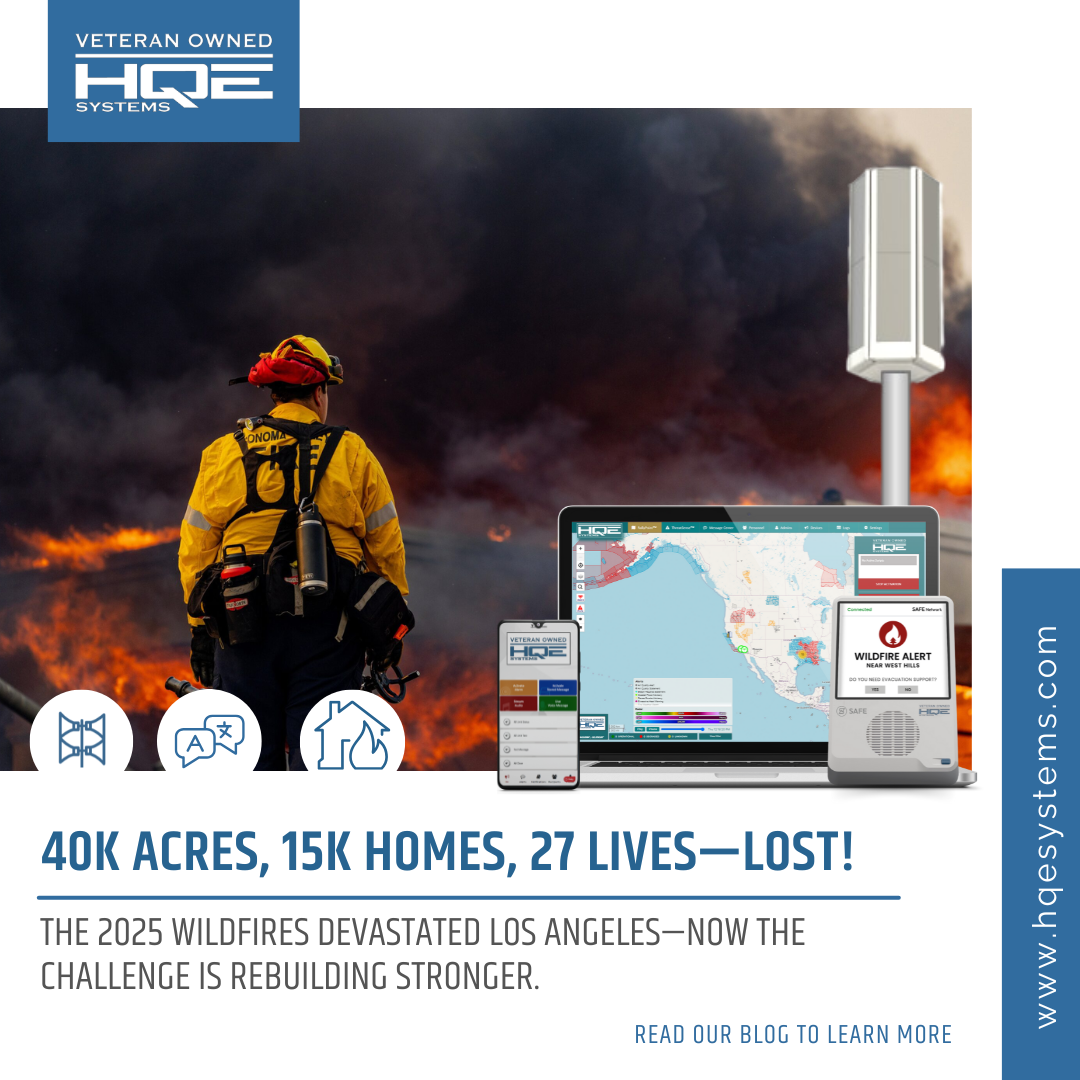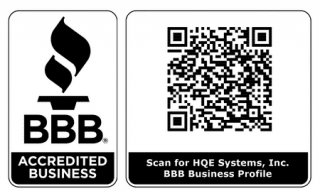The Aftermath: A City in Crisis and the Road to Recovery
Flames swallowed entire neighborhoods as 40,500 acres of Los Angeles County burned in January 2025. More than 27 lives were lost, and at least 15,467 structures were destroyed, leaving thousands homeless (Forbes, 2025). The fires, fueled by Santa Ana winds exceeding 90 mph, tore through the Palisades and Eaton areas, creating one of the costliest natural disasters in U.S. history, with damages estimated between $250 billion and $275 billion. Now, as first responders withdraw and rebuilding begins, Los Angeles faces its next great challenge: restoring homes, infrastructure, and resilience. What will it take for the city to recover?
The Current State of Rebuilding Efforts: Progress and Actions Taken
New Recovery Measures Implemented
Following the devastation caused by the January 2025 wildfires, state and federal agencies have taken significant steps to speed up recovery efforts. The focus is on housing reconstruction, infrastructure repairs, financial aid distribution, and transparency in progress tracking. Here’s what has been done so far:
1. Streamlining Permits to Accelerate Rebuilding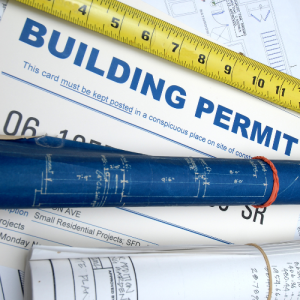
One of the biggest hurdles in wildfire recovery has historically been permit approval delays, which have stalled rebuilding efforts for months or even years. To prevent this from happening again, Governor Gavin Newsom enacted emergency reforms to accelerate the process. These changes include:
- Fast-tracked permit approvals for homeowners and businesses in affected areas.
- Automatic permit extensions for properties already in the rebuilding phase.
- Fee waivers for reconstruction permits, reducing financial burdens for displaced residents.
- Expedited reviews for large-scale housing projects, ensuring that multi-family units and affordable housing can be rebuilt faster.
Officials estimate that these measures could cut rebuilding time in half, compared to past disasters where residents faced six months to over a year of delays before receiving approval to rebuild (CA Gov, 2025).
2. Federal & State Funding for Disaster Recovery
Securing immediate financial relief has been a top priority. In response, both the federal and state governments have committed billions of dollars to rebuilding efforts:
- The federal government is covering 100% of disaster response costs for the first 180 days, including debris removal, emergency response operations, and temporary housing assistance.
- California has proposed a $2.5 billion recovery fund to support:
- Homeowners needing reconstruction grants
- Businesses seeking financial assistance for reopening
- Infrastructure projects, including road and utility repairs
This funding will play a critical role in ensuring that residents and business owners can begin rebuilding immediately, rather than waiting for delayed insurance payouts or federal reimbursements (Forbes, 2025).
3. Infrastructure Repairs and Public Services Restoration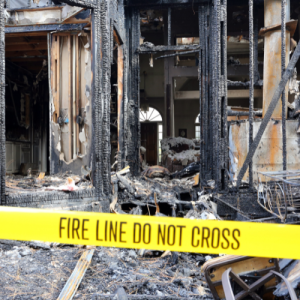
Infrastructure damage has been widespread, affecting roads, utility networks, and public safety systems. Restoration efforts currently in progress include:
- Clearing debris from over 250 miles of damaged roadways, restoring access to communities cut off by fire damage.
- Repairing power lines and water infrastructure to prevent long-term service disruptions.
- Rebuilding emergency response centers to ensure fire departments, law enforcement, and medical services have the resources needed for future crises.
Additionally, temporary housing sites have been set up in high-impact areas, providing shelter for those displaced while permanent rebuilding efforts continue.
4. Real-Time Recovery Tracking for Transparency
To increase public trust and accountability, Los Angeles County has launched an interactive recovery map, allowing residents to track debris removal, infrastructure repairs, and reconstruction progress. The map provides:
- Up-to-date information on debris clearance efforts in fire-affected neighborhoods.
- Real-time updates on infrastructure repair projects, including estimated completion timelines.
- Housing recovery tracking, showing which areas are receiving rebuilding assistance.
This digital transparency tool ensures that residents and business owners can stay informed about recovery efforts and hold agencies accountable for meeting rebuilding deadlines (LA County Recovery, 2025).
5. Community Outreach and Support Programs
Recognizing the need for mental health support and long-term recovery assistance, community organizations and government agencies have launched several outreach initiatives:
- Wildfire Recovery Centers have been established to provide counseling services, legal aid, and financial guidance to survivors.
- Public forums and town halls are being held to ensure community voices are heard in the rebuilding process.
- Small business support programs have been launched to help fire-affected entrepreneurs access loans, grants, and business relocation services.
Conclusion
The rebuilding efforts in Los Angeles are well underway, with streamlined permits, financial aid, infrastructure restoration, and transparency tools helping to drive progress. As the city moves forward, officials remain focused on rebuilding efficiently while ensuring long-term resilience for communities affected by wildfires.
Want to learn more about LA’s recovery journey? Read our previous blog:
From Devastation to Determination: How Los Angeles is Rebuilding Stronger After the Fires
Key Challenges Slowing Rebuilding
Despite the progress in permitting reforms, funding, and infrastructure restoration, several challenges continue to slow down the rebuilding of Los Angeles. The sheer scale of destruction, coupled with financial roadblocks, infrastructure deficiencies, and economic setbacks, has made recovery a complex and prolonged process.
1. Housing Crisis & Displacement
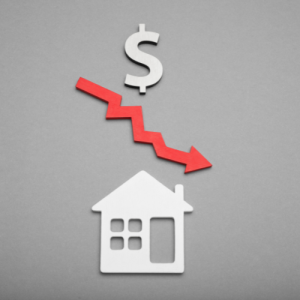 The destruction of 15,467 structures has left thousands of families without permanent housing, exacerbating Los Angeles’ already dire housing crisis. Many displaced residents are struggling to find affordable, long-term housing, as rental prices continue to rise due to high demand and limited availability.
The destruction of 15,467 structures has left thousands of families without permanent housing, exacerbating Los Angeles’ already dire housing crisis. Many displaced residents are struggling to find affordable, long-term housing, as rental prices continue to rise due to high demand and limited availability.
One of the most significant roadblocks to recovery is delays in FEMA assistance and insurance payouts. Many homeowners still have not received funds to begin reconstruction, leaving them with limited options for temporary or permanent housing (Urban Institute, 2025). These delays have particularly impacted low-income families who may not have alternative financial resources to rebuild.
Additionally, concerns about gentrification and forced displacement are rising. In neighborhoods like Altadena and the Palisades, property values are rapidly fluctuating, making it difficult for residents to return and rebuild. Many fear that real estate developers may take advantage of the disaster, pushing out long-term residents and changing the fabric of affected communities (The Guardian, 2025).
Without more streamlined financial assistance and targeted housing policies, many families risk being permanently displaced from their communities.
2. Infrastructure & Public Services Restoration
The wildfires caused massive damage to Los Angeles’ critical infrastructure, including:
- Over 250 miles of roads, requiring extensive clearing and repairs.
- Power lines and water systems, leading to service disruptions for thousands of residents.
- Public transportation routes, affecting commutes and emergency response efforts.
Although cleanup efforts are underway, the challenge lies in not just rebuilding, but modernizing the infrastructure to prevent future disaster-related failures. Experts argue that the city’s aging infrastructure must be rebuilt with climate resilience in mind, including:
- Fire-resistant power grids that prevent electrical failures and further wildfires.
- Underground utility lines to reduce the risk of fire-related blackouts.
- Stronger flood control systems to combat potential mudslides from burned-out hillsides.
Another critical issue is Los Angeles’ emergency response system. The fires revealed weaknesses in evacuation routes, fire alerts, and resource distribution, leading to delayed response times in some affected areas. Officials are now considering major upgrades to improve:
- Mass notification systems, ensuring real-time alerts for evacuations.
- Evacuation route planning, with new fire-resistant road infrastructure.
- Additional emergency service hubs, to ensure faster response to future crises.
Without modernization efforts, the city remains vulnerable to future natural disasters, putting residents, businesses, and first responders at continued risk.
3. Economic Recovery & Business Impact 
Beyond the physical destruction, the wildfires have also left a lasting impact on Los Angeles’ economy. Small businesses, particularly those in fire-affected areas, were devastated, with many losing:
- Storefronts and physical locations due to fire damage.
- Inventory and equipment, making reopening difficult.
- Employees, who were displaced or unable to work due to financial losses.
The entertainment industry, which is a major economic driver in Los Angeles, was also severely impacted. Several film productions were delayed or canceled, live performances suspended, and studios lost valuable sets and equipment in the fires (Reuters, 2025).
The tourism sector has also suffered. Concerns over air quality, damaged landmarks, and infrastructure issues have deterred visitors, leading to significant revenue losses for:
- Hotels and restaurants, which depend on tourism spending.
- Local attractions, many of which remain inaccessible or damaged.
- Event venues, including those for concerts, festivals, and conventions.
While state and federal funding aims to support economic recovery, rebuilding Los Angeles’ economy will require long-term solutions, including business grants, workforce redevelopment programs, and incentives for industries affected by the disaster.
Conclusion
The housing crisis, infrastructure restoration, and economic recovery remain the biggest obstacles to rebuilding Los Angeles. While government policies and financial aid have helped jumpstart recovery efforts, significant challenges persist in getting families back into permanent homes, restoring critical services, and ensuring businesses can recover from financial losses.
The next phase of rebuilding will require not just reconstruction, but innovation, ensuring that Los Angeles emerges stronger, more resilient, and better prepared for future disasters.
How HQE Systems Can Support Los Angeles’ Rebuilding Efforts
As Los Angeles continues to rebuild in the wake of one of the most devastating wildfires in state history, it is critical to integrate innovative emergency management, resilient infrastructure solutions, and proactive disaster recovery measures. HQE Systems specializes in technology-driven solutions that can enhance public safety, infrastructure resilience, and economic recovery, ensuring that Los Angeles is better equipped to handle future disasters.
1. Strengthening Public Safety & Emergency Communication
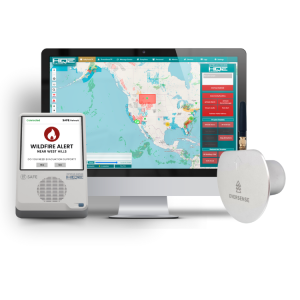 One of the key challenges during the January 2025 wildfires was the lack of coordinated emergency alerts and response systems. Many residents reported receiving late evacuation warnings or no alerts at all, putting lives at risk. HQE Systems can help modernize emergency communication networks by:
One of the key challenges during the January 2025 wildfires was the lack of coordinated emergency alerts and response systems. Many residents reported receiving late evacuation warnings or no alerts at all, putting lives at risk. HQE Systems can help modernize emergency communication networks by:
Deploying Advanced Mass Notification Systems – A reliable, real-time mass notification system ensures that residents, businesses, and emergency responders receive accurate, immediate updates during wildfires, floods, earthquakes, and other emergencies. HQE’s AI-driven alert systems integrate multiple communication channels, including:
- Mobile push notifications and SMS alerts
- Outdoor warning sirens with pre-recorded and live voice messaging
- Digital signage and public address systems
Improving Emergency Coordination Between First Responders – The fires exposed weaknesses in inter-agency communication, delaying response times. HQE’s interoperable communication platforms enable seamless coordination between fire departments, city agencies, and law enforcement, ensuring that emergency teams share real-time data and operate efficiently.
Upgrading Siren and Public Address Systems – Many outdated warning sirens failed or were insufficient for effective evacuation alerts. HQE’s next-generation sirens provide:
- Geolocation-based activation, allowing alerts to target specific risk zones.
- AI-enhanced voice clarity, ensuring instructions are loud, clear, and easily understood.
- Battery and solar-powered backup systems, guaranteeing functionality even if power grids fail.
By implementing these solutions, Los Angeles can significantly reduce response times, improve situational awareness, and ensure that residents receive critical alerts when it matters most.
2. Infrastructure Resilience & Smart City Solutions
Rebuilding Los Angeles’ infrastructure presents an opportunity to modernize systems and ensure long-term resilience against future disasters. HQE Systems provides cutting-edge smart city technologies designed to strengthen critical infrastructure, enhance disaster preparedness, and reduce future risk.
Rebuilding Key Infrastructure with Fire-Resistant Materials and Smart Energy Grids – Wildfires often result in widespread power outages due to damaged transmission lines. HQE Systems can help cities transition to:
- Underground power lines, reducing the risk of electrical fires.
- Fire-resistant building materials, increasing durability in high-risk zones.
- Microgrid energy solutions, providing localized power backups for essential services.
Implementing Smart Sensor Technology for Early Detection – The 2025 wildfires spread rapidly due to dry conditions and high winds. HQE’s AI-powered environmental sensors monitor:
- Humidity, temperature, and wind speeds to detect high-risk conditions before fires start.
- Air quality and toxic smoke levels, providing public health alerts.
- Underground water levels, ensuring efficient firefighting water supply.
Enhancing GIS Mapping Systems for Evacuation and Infrastructure Tracking – Real-time Geographic Information Systems (GIS) allow authorities to visualize disaster impacts and optimize evacuation routes. HQE Systems offers:
- AI-driven evacuation modeling, predicting traffic patterns and guiding safer exits.
- Live infrastructure status updates, displaying damaged roads, utility outages, and rebuilding progress.
- Public safety dashboards, giving officials and residents access to up-to-date hazard reports.
By integrating smart city solutions, Los Angeles can build a more resilient infrastructure, mitigate future disasters, and improve overall public safety.
3. Business & Community Recovery Support
The economic impact of the wildfires has been devastating, particularly for small businesses, cultural institutions, and tourism-dependent industries. HQE Systems is committed to helping businesses recover while ensuring long-term community resilience.
 Helping Small Businesses Access Funding and Insurance Claims Support – Many businesses struggle to navigate FEMA grants, insurance claims, and financial aid applications. HQE offers:
Helping Small Businesses Access Funding and Insurance Claims Support – Many businesses struggle to navigate FEMA grants, insurance claims, and financial aid applications. HQE offers:
- Business continuity consulting, guiding owners through disaster relief programs.
- Damage assessment technology, streamlining insurance claim documentation.
- Financial resource tracking, ensuring that funding is distributed equitably.
Working with Community Organizations to Provide Mental Health Resources and Resilience Training – The psychological toll of disasters is often overlooked. HQE partners with local mental health professionals and emergency management agencies to provide:
- Trauma recovery workshops for survivors, first responders, and impacted families.
- Community preparedness training, teaching residents how to respond to future disasters.
- Public education campaigns, raising awareness about disaster resilience and emergency response.
Supporting small businesses and community resilience is crucial for economic stability and long-term recovery. By providing these resources, HQE ensures that Los Angeles’ recovery goes beyond rebuilding structures—it rebuilds lives.
Conclusion
Los Angeles is at a turning point. The 2025 wildfires exposed vulnerabilities in the city’s emergency response systems, infrastructure, and economic resilience. Moving forward, it is essential to rebuild with innovation, technology, and proactive disaster planning.
HQE Systems offers proven, scalable solutions to:
- Strengthen emergency response capabilities through real-time alerts and mass notification systems.
- Modernize critical infrastructure using smart sensors, fire-resistant materials, and energy-efficient solutions.
- Support economic and community recovery, ensuring that businesses, families, and local institutions have the resources they need to rebuild and thrive.
With the right strategies, Los Angeles can emerge stronger, more resilient, and better prepared for the future.
What’s Next for Los Angeles?
Los Angeles is now at a critical stage in its recovery efforts. With over 40,500 acres burned, 15,467 structures lost, and economic damages exceeding $250 billion, the city must prioritize solutions that prevent similar destruction in the future (Forbes, 2025).
Instead of simply restoring what was lost, Los Angeles has the opportunity to rebuild with stronger fire mitigation strategies, smarter emergency response systems, and better infrastructure. The next phase of recovery will focus on three major areas:
1. Engineering a More Fire-Resistant Los Angeles
The 2025 wildfires proved that many homes, businesses, and public buildings were not adequately prepared for large-scale fire events. Moving forward, Los Angeles is advancing fire-resistant construction and land-use strategies, including:
- Expanded use of non-combustible building materials in both residential and commercial rebuilding projects.
- Updated zoning and defensible space policies to minimize fire spread risks in high-danger zones.
- Stronger utility infrastructure, including fire-resistant power grids and greater use of underground electrical lines.
Additionally, researchers and urban planners are studying burn patterns from the latest fires to refine building codes and wildfire-resistant development plans, ensuring reconstructed areas are safer than before (CA Gov, 2025).
2. Advancing Emergency Preparedness and Response Technologies
One of the biggest lessons from the 2025 wildfires was the need for more effective evacuation planning and real-time emergency notifications. Many residents received evacuation orders late, leading to unnecessary risks and chaotic traffic patterns.
To improve preparedness, Los Angeles is integrating new technologies such as:
- AI-driven wildfire detection systems, which analyze weather conditions and heat signatures to predict fire spread patterns before they escalate.
- Enhanced evacuation route mapping, using GIS-based simulations to improve traffic flow during emergencies.
- Modernized mass notification networks, ensuring alerts reach residents immediately via smart sirens, mobile alerts, and automated PA systems.
These innovations will ensure that future evacuations are faster, more coordinated, and reduce risks to residents and emergency responders (HQE Systems).
3. Long-Term Infrastructure and Economic Stability
Beyond homes and businesses, Los Angeles must also modernize public infrastructure to better withstand extreme weather events and future wildfires. Key rebuilding efforts include:
- Strengthening water distribution networks, ensuring firefighters have consistent access to water during large-scale emergencies.
- Reinforcing roads, bridges, and critical transit routes that were damaged or rendered inaccessible during the fires.
- Constructing additional firebreaks and vegetation management areas to create natural barriers against future wildfires.
At the same time, the city is working on economic stabilization efforts, such as:
- Business assistance grants to help companies recover financial losses.
- Temporary housing and rebuilding assistance for displaced families.
- Workforce development programs to retrain workers affected by the economic downturn caused by the fires.
Ensuring a strong economic recovery will be essential to bringing stability back to impacted communities while preparing for future challenges.
Conclusion: A Model for Future Disaster Resilience
The 2025 wildfires are among the most expensive disasters in U.S. history, surpassing Hurricane Helene’s $220 billion damage estimate (Forbes, 2025). However, Los Angeles has an opportunity to emerge as a leader in disaster resilience by implementing fire-resistant infrastructure, smarter emergency response systems, and long-term community recovery plans.
The next few months will determine whether the city simply rebuilds what was lost or builds a stronger, safer, and more resilient future for its residents.
HQE Systems is a certified Veteran Owned Company. For more information about HQE Systems Inc. and its emergency management, electronic security, and integration solutions, please visit www.hqesystems.com.

Contact: David Ditto (Early Warning Systems Subject Matter Expert)
Email: David.Ditto@hqesystems.com
Phone Number: (843) 872-7020
____________________
HQE Systems, Inc. | HQE is a Minority-Owned Service Disabled Veteran Owned Small Business (SDVOSB) providing full solutions for: Mass Notification Systems, Electronic Security Systems, Software Development Services, Contract Support, and Prototyping Services. As a brand-agnostic solutions provider, HQE prides itself in providing the BEST solution for the project. HQE possesses over 30+ factory certifications and reseller licenses to ensure our clients receive the highest quality service at the ideal budget. HQE can provide full design, installation, integrations, upgrades, and long-term maintenance support for any size and scope project.

